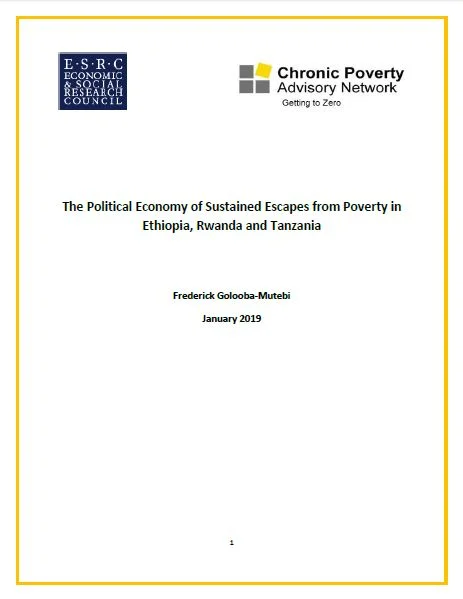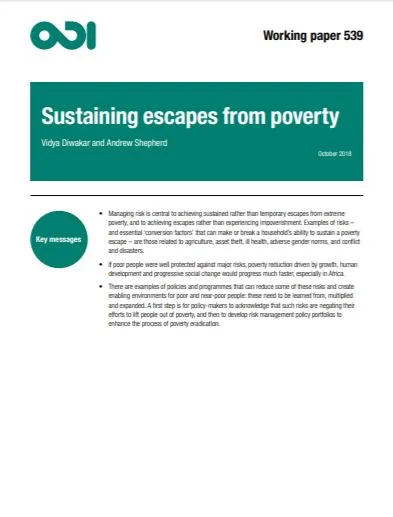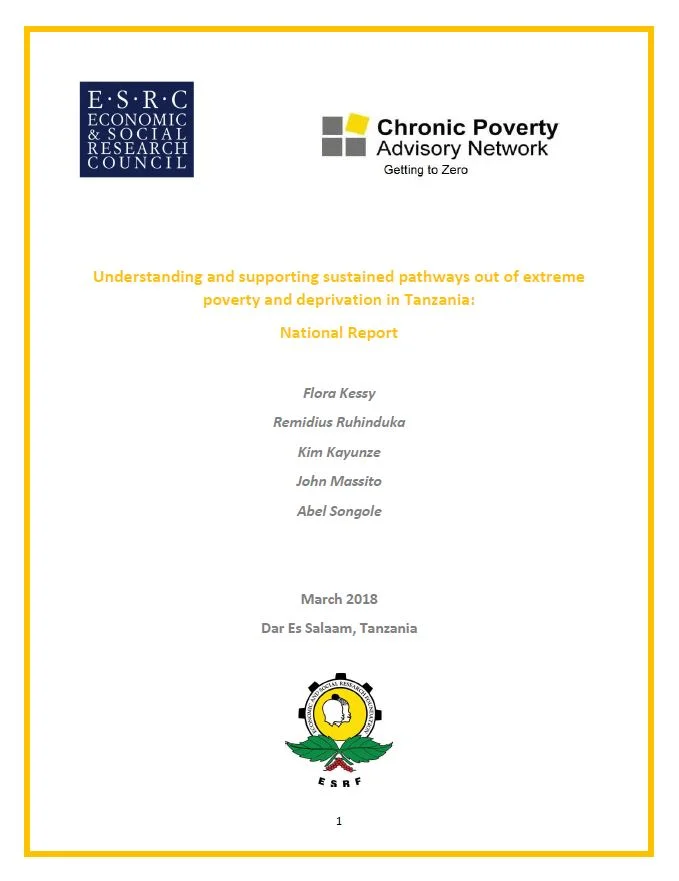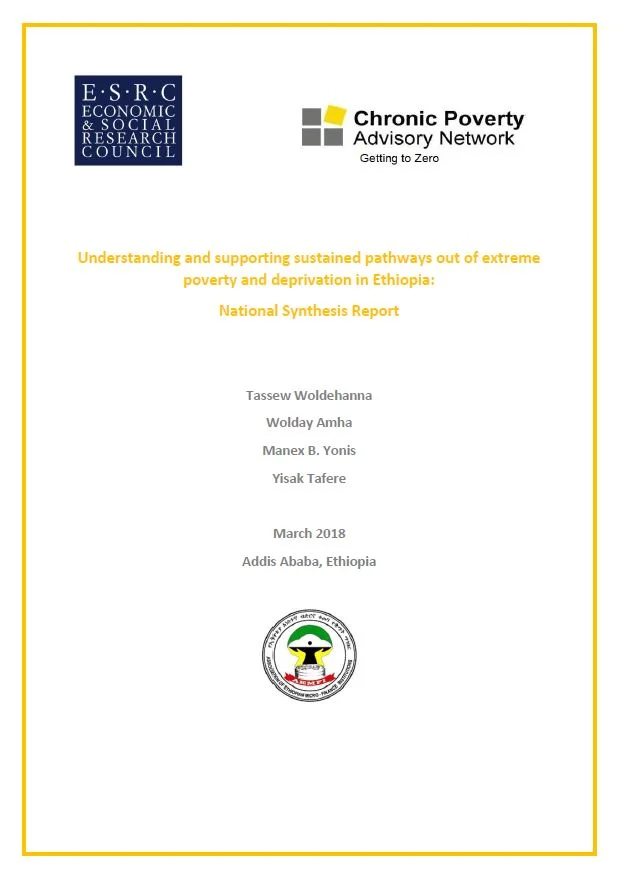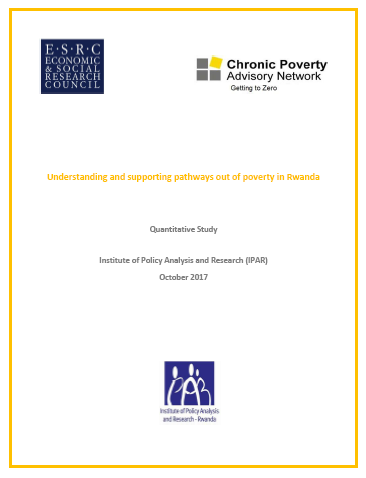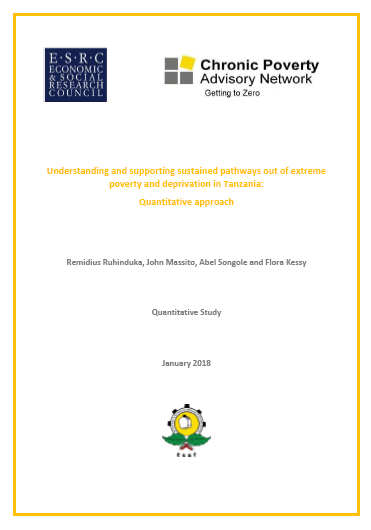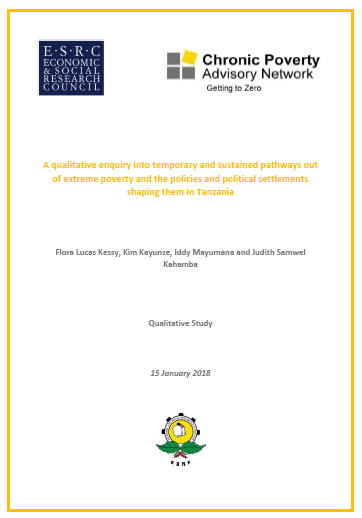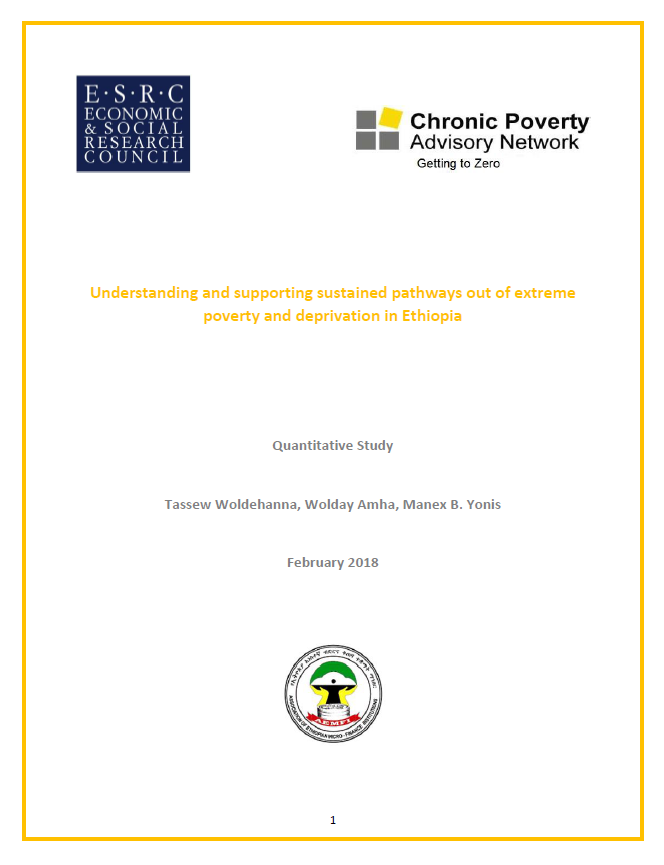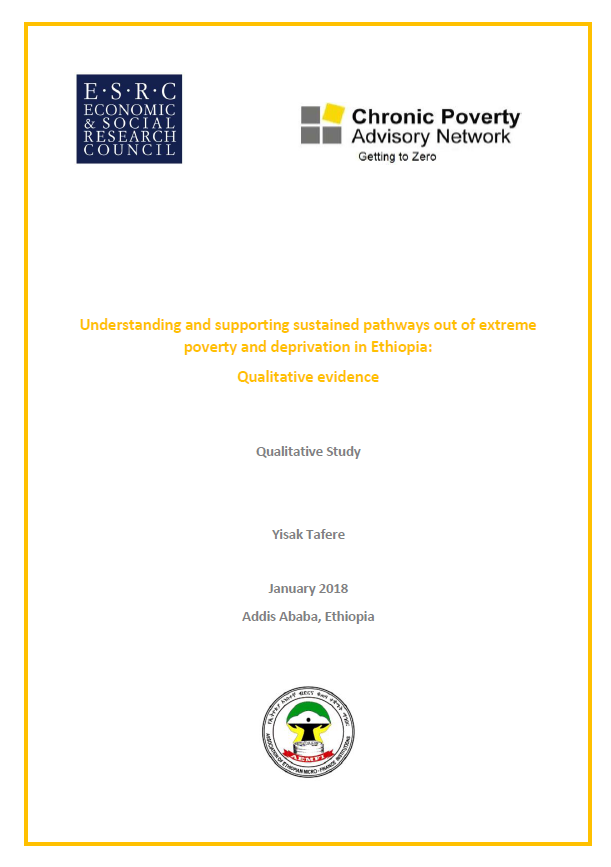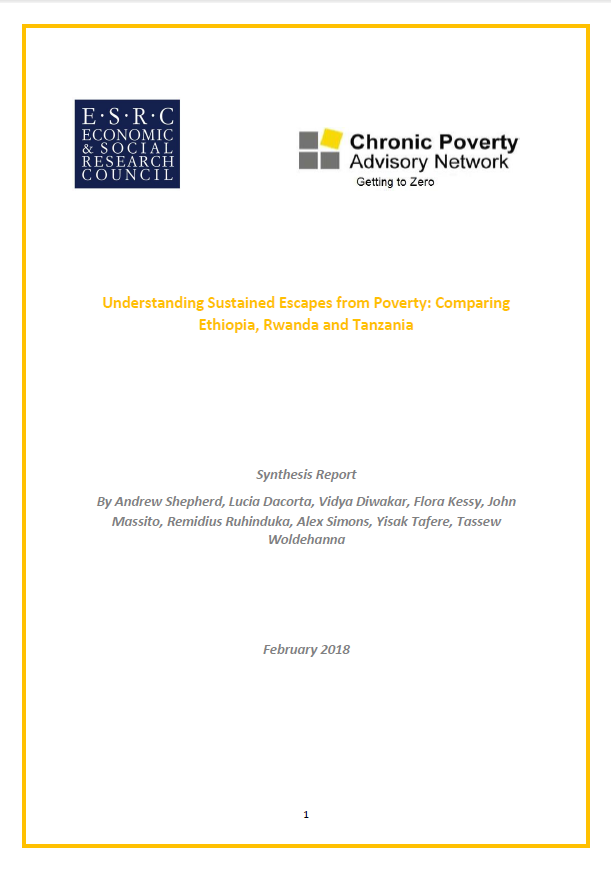Recent research findings by the Chronic Poverty Advisory Network reveal that a significant proportion of rural households that had escaped poverty in Kenya, Uganda and Tanzania fell back into it within eight to 10 years or even less. A significant number of non-poor rural households also became poor during the same period. As a result, the rate of rural households descending into poverty (becoming impoverished) in some periods has exceeded the rate of those sustainably escaping it. Thus, if the world is to ‘get to zero’ extreme poverty, this will require not just ensuring that men and women currently living in poverty are able to escape it, but also that new individuals do not become impoverished and that those who have escaped poverty do not once again fall below the poverty line. That is, we need to tackle chronic poverty, stop impoverishment and sustain escapes from poverty.
Since independence, Tanzania has been at the forefront in terms of addressing the poverty situation of its people. Right after independence in 1961, the country’s leadership pronounced the ‘three enemies’ of development as ignorance, disease and poverty. The policy direction that followed this pronouncement aimed at creating a development process that would generate a society free from abject poverty. This would mean having a population that lives a long and healthy life (long life expectancy), with knowledge (education and skills) and a decent standard of living (high income or command over economic resources). The three enemies are the same enemies that the country is still grappling with today, albeit with some improvements on health and education indicators.
As such, this study addresses the following three key questions:
1- What factors sustain escapes from extreme poverty? What are typical pathways of sustained escapes? How do these pathways vary by context and by identity (based on class, gender, ethnicity, etc.)? What factors shape resilience?
2- What policies/programmes/strategies/institutions work to create resilience and drive and sustain escapes from extreme poverty? How do these policies work? What groups benefit most?
3- How do political settlements affect sustained escapes for different groups of the extreme poor through policy design, implementation, resources allocated, accountability and changes in institutional norms?
Authors: Flora Lucas Kessy, Kim Kayunze, Iddy Mayumana and Judith Samwel Kahamba
This study is part of the project Understanding and supporting sustained pathways out of extreme poverty and deprivation.


